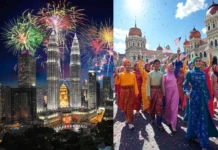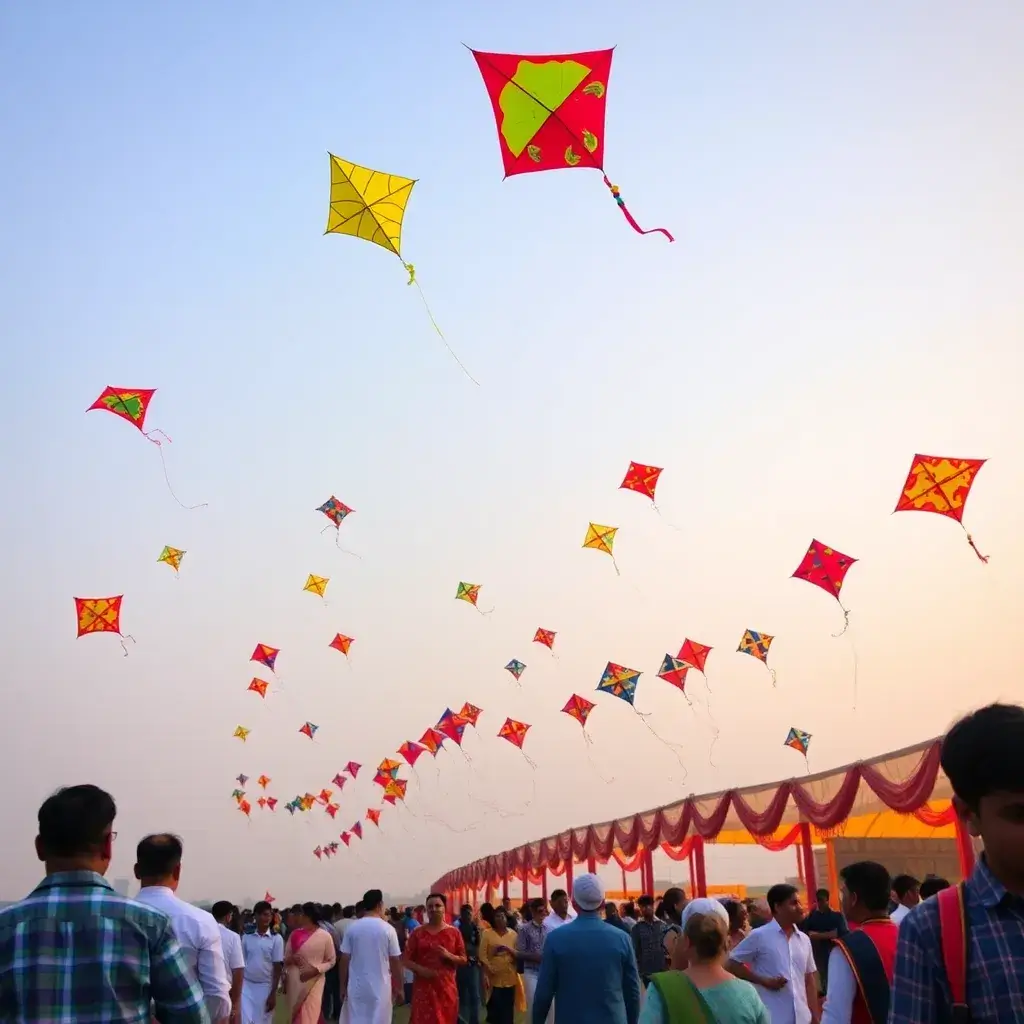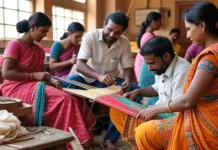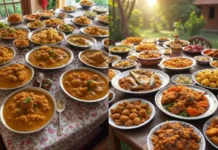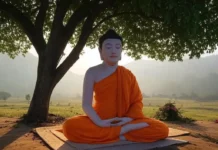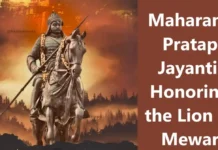Makar Sankranti is one of the most important and widely celebrated festivals in India. It marks the transition of the Sun into the zodiac sign of Capricorn (Makar), which usually happens on January 14th every year. This day is significant because it signals the end of winter and the start of the harvest season, bringing warmth and longer days. The festival is celebrated with great enthusiasm across India, with different regions observing unique traditions and customs.
Makar Sankranti is dedicated to the Sun God, who is believed to bring light, warmth, and prosperity. The festival also marks the beginning of the Uttarayan phase, a time when the sun starts to move northward, making the days longer. This period is considered highly auspicious in Hindu culture.
The way Makar Sankranti is celebrated varies from state to state. Common activities include kite flying, bonfires, and the preparation of traditional sweets like tilgul (made from sesame seeds and jaggery), which symbolize sweetness, goodwill, and gratitude for the harvest.
This festival is not just about farming and agriculture, but also about celebrating new beginnings, prosperity, and the importance of community. It’s a time for families and friends to come together, enjoy special foods, and express their thanks for the blessings of the past year.
In summary, Makar Sankranti is a vibrant and meaningful festival, symbolizing the end of winter, the start of a new harvest season, and a time of joy, light, and new opportunities for all.
Key Details
| Detail | Information |
|---|---|
| Date & Day | January 14, Tuesday 2025 (or the nearest day based on the solar calendar) |
| Theme | “Unity in Diversity” (subject to variation, highlighting community and togetherness) |
| Organizing Body | While there is no official organizing body, various religious and cultural institutions promote the celebration across India. |
| Type of Observance | National (India), Regional (specific celebrations in various states) |
| Best Hashtags | #MakarSankranti #KiteFestival #HarvestFestival #SankrantiCelebration #Uttarayan #MakarSankranti2025 |
| Regional Variations | Celebrated as Pongal in Tamil Nadu, Uttarayan in Gujarat, Lohri in Punjab, and Maghi in Haryana |
| Festivities | Kite flying, bonfires, traditional food, cultural fairs, and prayers to the Sun God. |
| Public Participation | Community events such as fairs, kite festivals, food distributions, and religious gatherings. |
History and Origin of Makar Sankranti
Makar Sankranti’s history stretches back thousands of years to the Vedic period, making it one of the oldest festivals in India. In ancient times, the festival was linked to the sun’s movement into the northern hemisphere, a transition that was considered highly significant. This shift was seen as a symbol of prosperity, light, and hope, as the increased sunlight marked the beginning of warmer weather and the promise of better crop yields.
In Hindu mythology, Makar Sankranti is also associated with Lord Sun visiting his son, Lord Shani, who governs the zodiac sign Capricorn (Makar). According to the Mahabharata, the festival is an important time for rituals and offerings made to the gods, seeking their blessings for a good harvest and prosperity.
The festival has strong agricultural roots, especially in India, where it marks the end of the rabi crop sowing season and the beginning of the harvest. Since farming plays a central role in Indian life, Makar Sankranti became a celebration of gratitude for a successful harvest and hope for a bountiful future.
Makar Sankranti is celebrated in many regions of India, but each state has its own unique customs and names for the festival: Pongal is celebrated in Tamil Nadu, Uttarayan is celebrated in Gujarat, Lohri is celebrated in Punjab,
While these regional festivals may differ in customs and names, they all share the common theme of celebrating the harvest, thanking the Sun God, and welcoming the longer, warmer days ahead.
Importance and Objectives
Makar Sankranti is more than just a celebration of the sun’s journey—it represents a shift toward positivity, progress, and gratitude. For centuries, it has been a way to celebrate the harvest, giving thanks to nature for its bounty. It is also a time for people to come together, strengthen social bonds, and share blessings with loved ones.
The festival’s objectives are simple yet profound:
- Spiritual Significance: Offering prayers to the Sun God for good health, prosperity, and a bountiful harvest.
- Cultural Unity: Bringing people together across various communities and regions to celebrate the richness of Indian culture.
- Renewal and New Beginnings: Symbolizing the start of longer days and the end of winter, bringing with it a fresh start and opportunities for growth.
In addition, Makar Sankranti is a time for people to let go of negative energy and embrace hope, joy, and togetherness.
How It Is Celebrated
Kite Flying and Bonfires
One of the most iconic ways of celebrating Makar Sankranti is through kite flying. Known as Uttarayan in Gujarat, this tradition sees people of all ages taking to the skies with colorful kites, competing to outfly each other and cut the kites of others in friendly battles. This practice is not only fun but also represents the soaring of the soul and the victory of light over darkness.
In other parts of India, people celebrate by lighting bonfires, symbolizing the sun’s increased power. In Punjab, this celebration is known as Lohri, where families gather around a large fire, sing traditional folk songs, and dance the Bhangra to celebrate the harvest season. The warmth of the bonfire is symbolic of the warmth of the sun as it moves northward.
Traditional Sweets and Foods
Makar Sankranti is also a time to enjoy special foods, particularly those made with sesame seeds (til) and jaggery. In many states, people prepare tilgul (a sweet made of sesame and jaggery), which is exchanged with the saying “Tilgul ghya, god god bola,” meaning “Eat sesame and jaggery, and speak sweet words.” This tradition emphasizes the spirit of generosity, good wishes, and community bonding.
In Tamil Nadu, the festival is celebrated as Pongal, where the first rice harvested is cooked in a traditional clay pot, symbolizing abundance. Pongal dishes are then offered to the Sun God as part of the rituals.
Regional Variations
- Pongal in Tamil Nadu includes cooking the first rice of the season, and people offer prayers to the Sun and nature.
- Uttarayan in Gujarat involves the famous kite festival where people gather to fly kites and celebrate with family and friends.
- Lohri in Punjab is marked by dancing around the bonfire, singing traditional folk songs, and eating foods like tilgul, makki di roti, and sarson da saag.
Rituals and Prayers
On Makar Sankranti, people visit temples and offer special prayers to the Sun God. Many believe that taking a holy dip in sacred rivers like the Ganga on this day purifies the soul and brings blessings.
Interesting Facts
- Solar Event: Makar Sankranti is one of the few Hindu festivals that is celebrated according to the solar calendar, as opposed to the lunar calendar.
- Kite Flying Competitions: Gujarat’s Uttarayan is one of the biggest kite festivals in the world, attracting participants from all corners of the globe.
- Tilgul Tradition: The custom of exchanging tilgul (sesame and jaggery sweets) is believed to promote harmony and positive communication among people.
- Agricultural Significance: Makar Sankranti marks the end of the winter crop season and the beginning of the harvest season, making it crucial for farmers across India.
Quotes or Messages
“Let the sun bring light into your life, just as Makar Sankranti brings hope and prosperity to all.”
“As the kites soar high this Makar Sankranti, may your life also reach new heights of success and happiness.”
“Makar Sankranti reminds us that with every new season comes new opportunities, so embrace them with open arms.”
Conclusion
Makar Sankranti is a festival that beautifully blends the joys of nature, tradition, and spirituality. Whether you’re flying kites, enjoying traditional sweets, or simply spending time with family and friends, the essence of the festival is rooted in gratitude, new beginnings, and hope for the future.
As you celebrate this vibrant festival, take a moment to appreciate the blessings in your life and share them with others. Join the conversation by leaving a comment below or sharing your Makar Sankranti celebrations with us on social media. Explore more content related to Indian festivals on our website and celebrate the beauty of traditions!




